Getting good sleep can make all the difference, especially when you’re travelling. And we know that relaxation means something different for everyone. So, whether you’re a night owl or out like a light, we’ve got something to help you arrive revived. We offer a handy range of holistic sleep-support products designed to put you in the pilot’s seat of your of own wellbeing, from the comfort of the cabin or your very own sofa.
Dreamy cabins all round

Economy
In Economy, you’ll have a pillow and blanket to keep you feeling cosy, a reclining seat and supportive headrest wings. If having an extra throw-over or your own little pillow will make all the difference to your sleep, our generous hand luggage allowance means there’s plenty of room to bring them along with you.
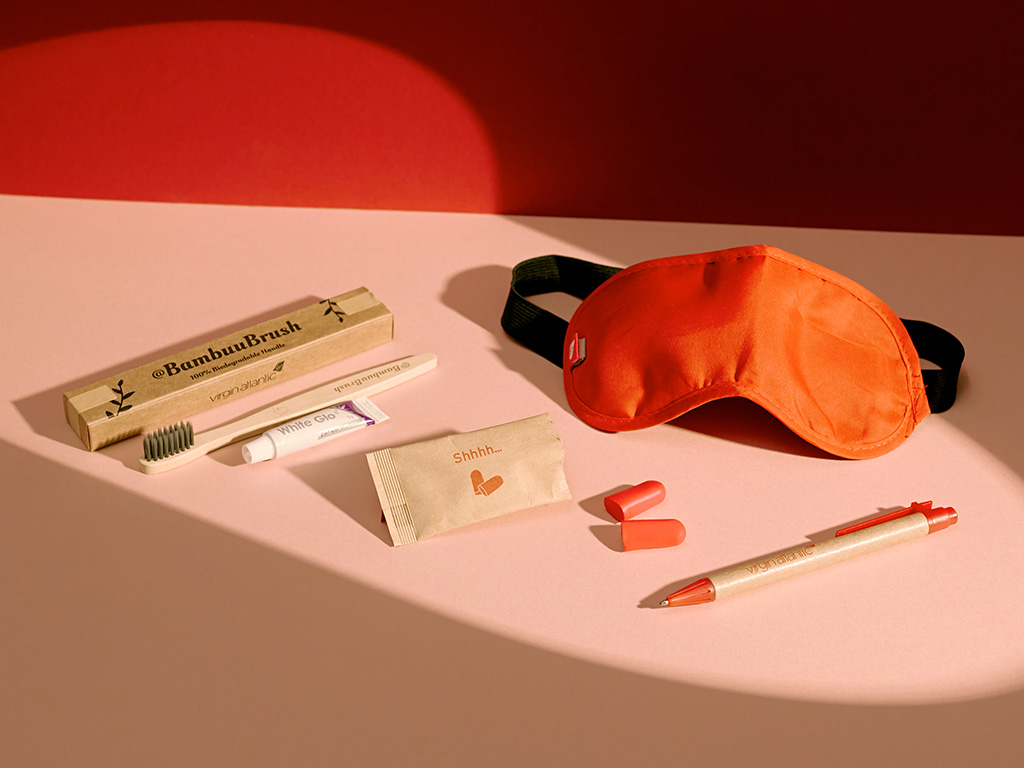
Premium
In Premium, you can relax into your extra roomy seat with up to 8 inches recline, stretch out with up to 38 inches of legroom and a supportive footrest, and snuggle up with a pillow and blanket. And if you’re travelling on a night flight, you’ll be given a Goodie Bag choc-full of sustainable, premium treats.
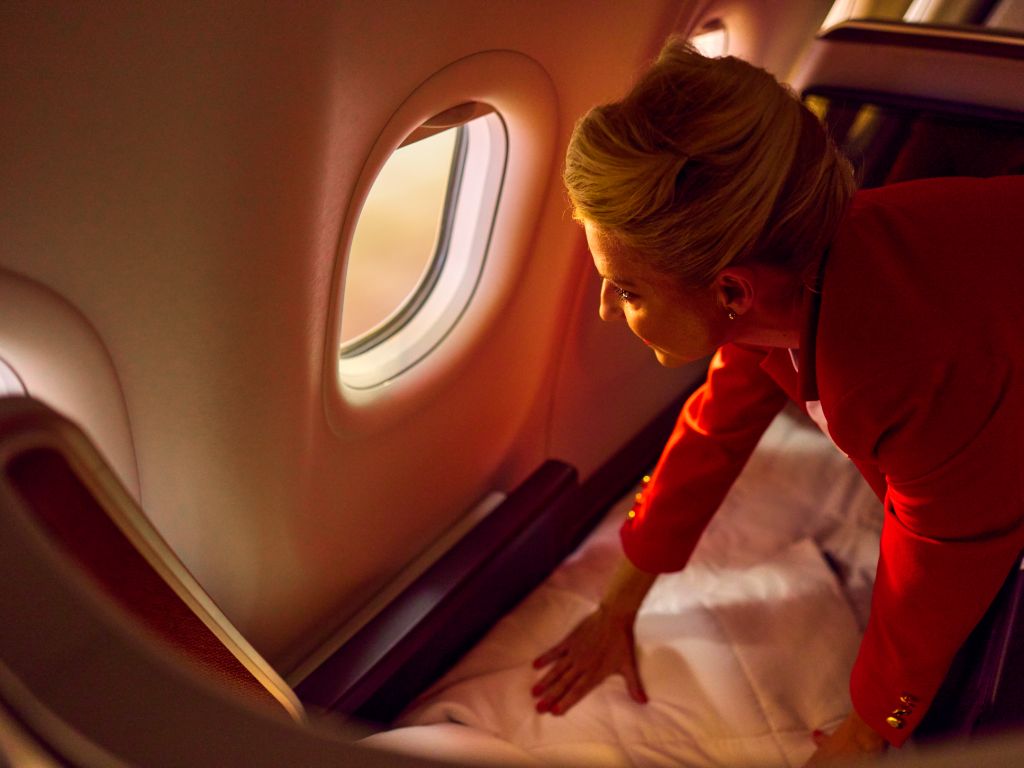
Upper Class
In Upper Class, your seat transforms into a lie-flat bed with a crisp cotton pillow and cushiony mattress topper and duvet. There’s also a luxurious sleepsuit, and a Goodie Bag including an eye mask, earplugs, toothbrush & toothpaste, plus REN hand cream and lip balm to keep skin pillowy-soft while indulging in a touch of self-care.
Before you step onboard
Fuel up to wind down
Food plays an important part in regulating our circadian rhythm (our body’s 24-hour clock).
Before a long-haul flight, sleep experts recommend balanced, protein-rich meals with lots of vegetables and fruit. Steer clear of carb-heavy or ultra-processed foods for better sleep quality.

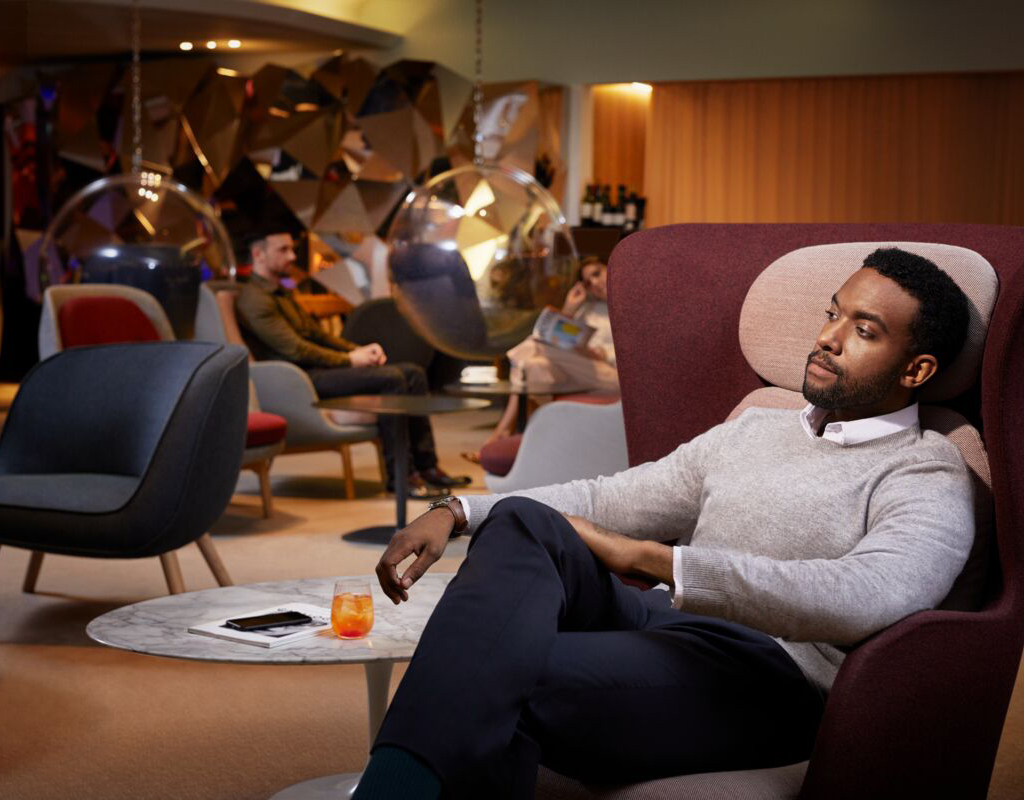
Kick back in our Clubhouse
Our Clubhouses offer a range of plant-based and healthy eating and drink options to help you feel your best.
In our London Heathrow Clubhouse, you'll find our dedicated relaxation space – with lie-flat lounge beds, heavy blankets and a menu of drinks and aromatherapy products to help promote a feeling of calm preflight.
And if you’ve time for a full freshen up, most of our Clubhouses have showers complete with complimentary REN skincare products guaranteed to uplift the spirits before take off.
Six tips for a great flight's sleep
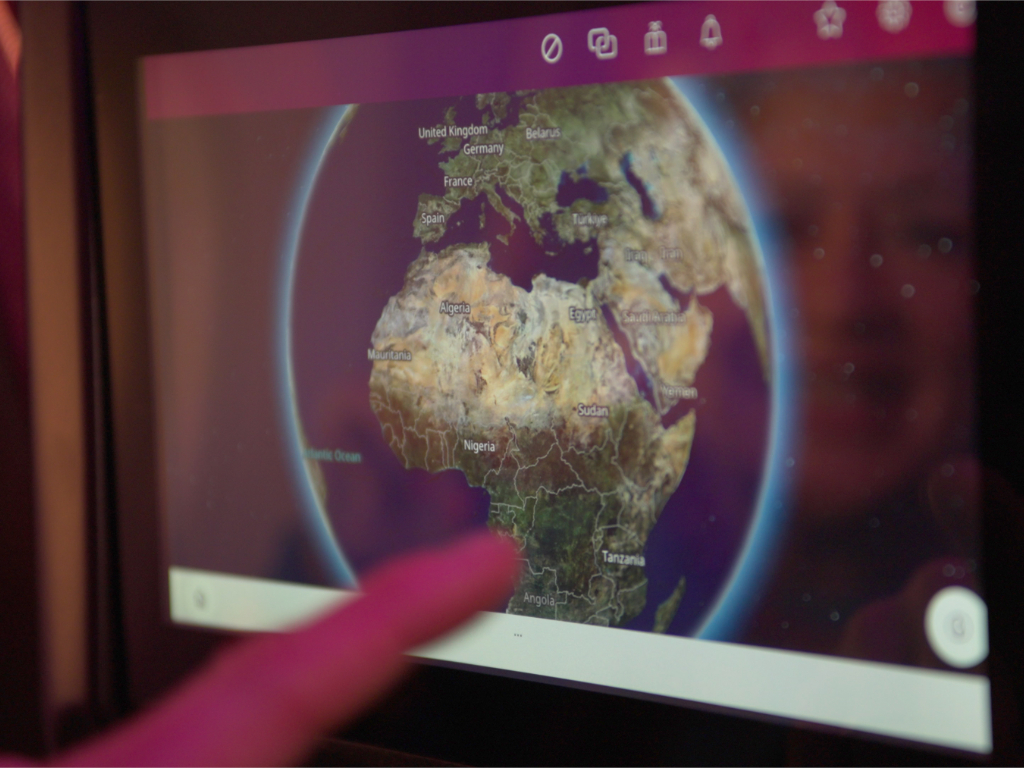
Set the clock
Jetlag can be a drag, but it doesn’t have to be the way things go. Wind your watch to your destination’s time zone to get some sky-high shuteye at the right time. Maybe that’s getting a few hours kip in the sky or staying up with a movie or two so you can sleep at your destination.
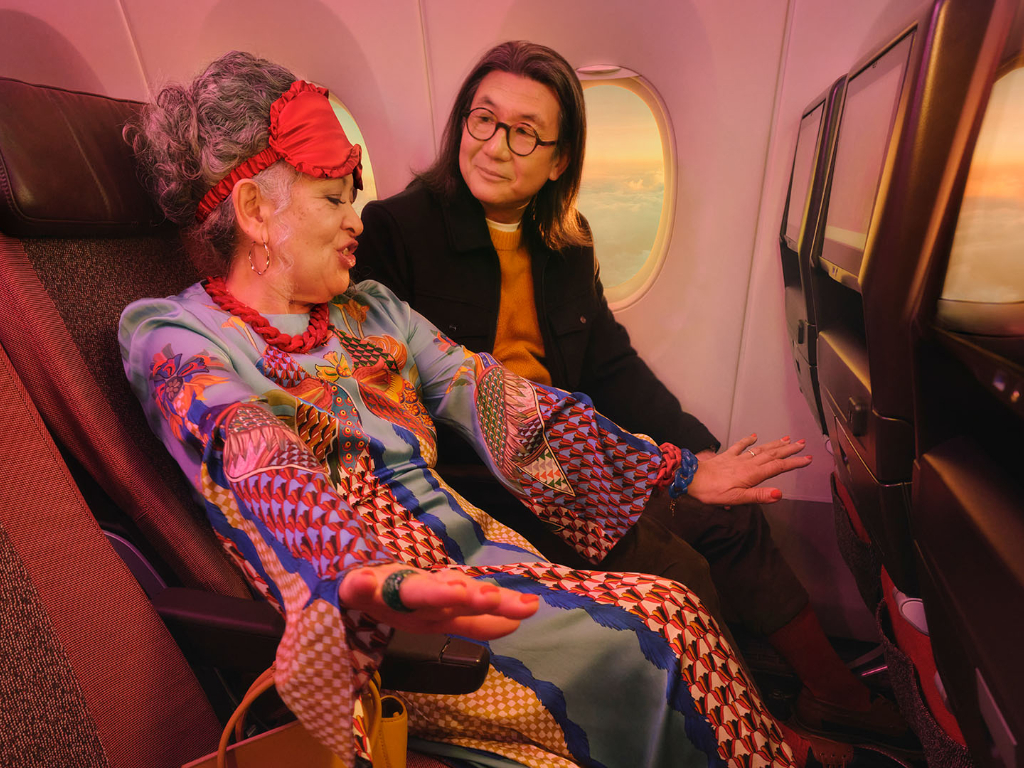
Deep breath...and stretch
Take a few minutes to stretch out your muscles or practice deep breathing to encourage your body to fully relax. On our inflight entertainment, you’ll find a selection of guided stretching, breathing and mindfulness exercises. Everything you need to physically and mentally prep yourself for sleep.
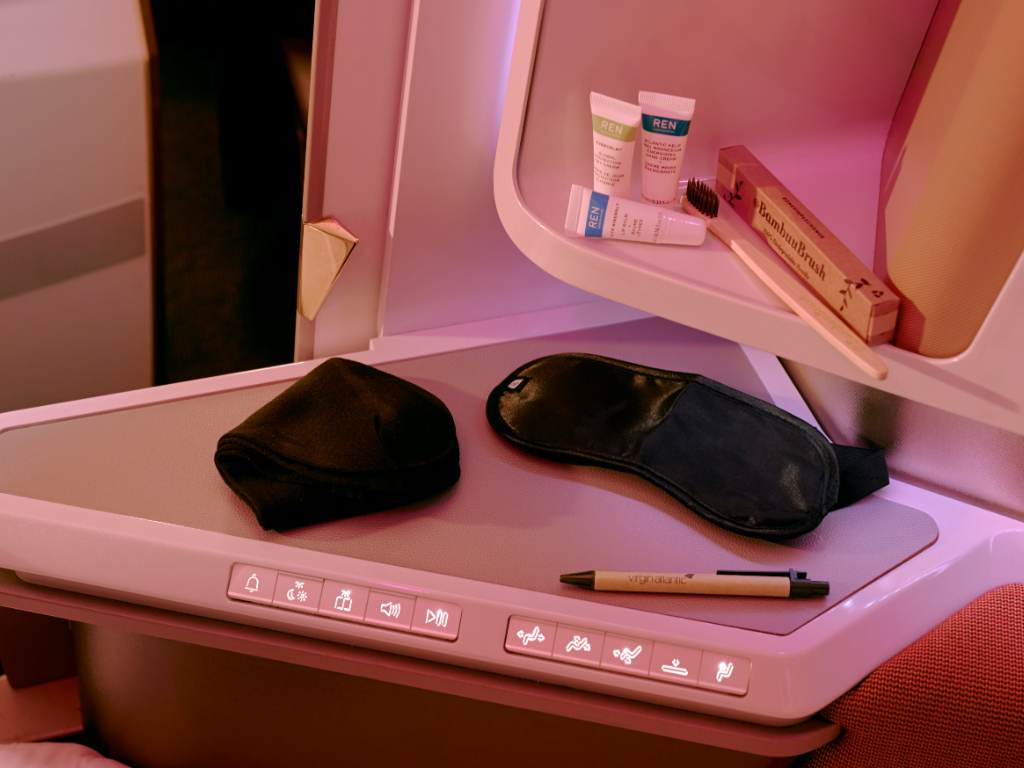
Everyday rituals at altitude
Settle into deep sleep by sticking as closely to your regular bedtime routine as possible. Brush your teeth, cleanse your face and slip into something comfy in our washrooms. There’s no shame in popping on your pjs either and if you’re flying in Upper Class, we’ve got some waiting onboard for you.

Choose your fuel
Our deliciously different onboard menus offer something for everyone. But if sleep’s your number one goal, we recommend lighter, plant-based dishes, less sugary snacks, and swapping caffeine and alcohol for a herbal tea or decaf instead. Try Twinings Sleep tea in Premium and Economy, or Teapigs’ Snooze or a non-alcoholic cocktail in Upper Class. Perfect drops for dropping off.
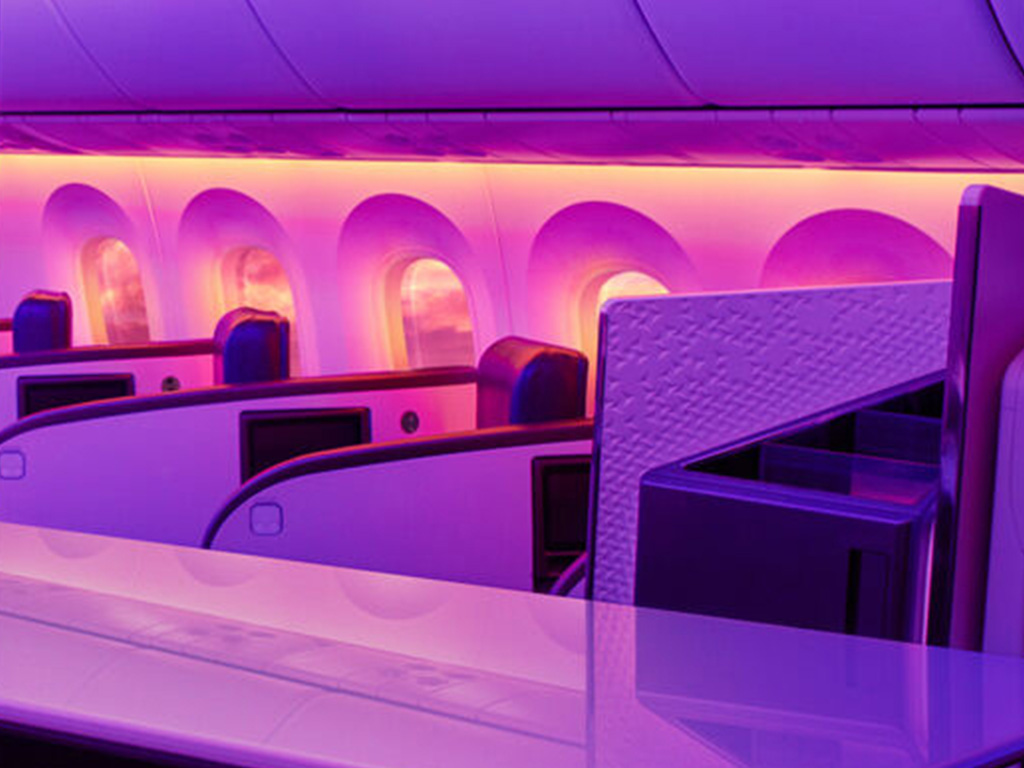
Create a mood
Our onboard lighting matches the cabin activity and time in our destination, and we’ll dim it right down to optimise your rest. Eye masks also block out distractions (free in Premium and Upper Class). Reading or listening to music can be more effective than looking at a screen, and our ‘Wellness & Sleep’ content includes meditations from Headspace, relaxing ASMR, and 8 hours on the neuroscience of sleep from Max Richter.
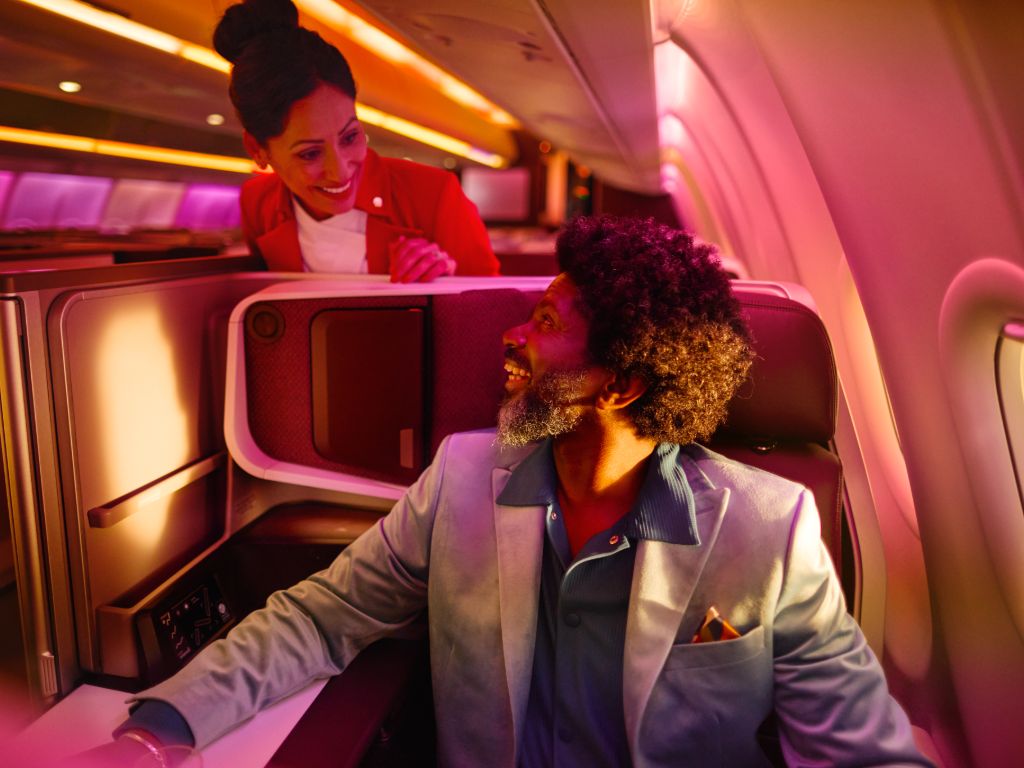
Make yourself at home
Ask our crew for a water top-up at any time to keep your body hydrated and regulate your energy levels throughout your flight. Change into comfy clothes or PJs, recline your seat back as far as it will go and stretch your legs – you can even take your shoes off if you like. Put your earplugs in, close your eyes and relax.
